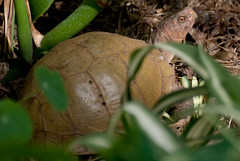Yesterday morning our area was hit with a cold, blustery wind that is continuing today (and maybe tomorrow). There's not much that must be done in the yard immediately, so I thought I'd share a few random thoughts.
A friend posted on Facebook that he'd heard that one fertilized chicken egg leads to one flu vaccination, but he was looking for confirmation of this surprising detail. I did a couple of lookups and it comes down to between one and two fertilized eggs are used to come up with one injection. (However, the same amount of eggs results in hundreds of the inhaled version. The injected version is a killed virus. The inhaled version is a dilute, weakened-but-live virus.) That led to a discussion of how very many roosters and hens have been doing what they do in the name of flu vaccinations.
Having kept chickens (and ducks and geese), I can tell you that it doesn't take that many roosters! Opinions vary, but somewhere between 1-to-8 and 1-to-30 are the numbers quoted for how many roosters you need for how many hens. If you're going for maximal fertility, 1:8. If you're just keeping chickens for the eggs, you really don't need a rooster at all. But a neighbor had a dozen hens and only the one rooster and all her hens were bald from the rooster... um.. holding on to.. um... When she increased the flock (hens only), they got a lot less bald.
Chickens are great to have around to keep the bigger bugs in check. Mine did a great job on eating the Gypsy Moth larvae before they finished eating my oak trees. They were quite the hysterical sight, watching them try to chase down crickets and grasshoppers. They'd dash up to one and, about the time they'd go to peck it, the thing would jump four feet. The chicken would dash the four feet and stop. The cricket would jump. Chicken dash. Cricket jump. It's amazing that they ever got anything to eat. But they were quite willing to eat almost anything I threw out into their pen. They simply adored watermelon rinds! (And, yes, I fed them chicken feed and cracked corn, too.)
At the same time that I had the chickens, I also had ducks. There were only the three of them. Ducks are also good at eating the bigger bugs. They're also good for eating slugs and snails. Sadly, they're also really good at eating every freshly sprouted sprout and every freshly-transplanted vegetable start in the garden if you don't keep them out! The chickens can do the plants some damage, too, but not as much as the ducks.
Along with the chickens and ducks, I also had three geese. The big male tended to be mean and aggressive, but could be intimidated. The smallest one was like a little puppy. She would follow me around. She would walk with me down the drive and across the road to my mailbox. But, after I would retrieve my mail, she would sit down and insist on being carried back to the house. But she sat quietly, tucked under my arm, helping me open and read my mail till we got to the porch where I would set her down next to me while I finished with the mail.
She would continue to check on the mail, but then would gaze around the yard. Occasionally she would talk to me in whispering tones. If I whispered back, she would whisper some more. But if I spoke to her, she would honk. That would set the other geese to honking. When they would start honking, she would stand up and honk LOUDLY. So her friends would start honking LOUDLY. That's the bonus of geese. They are terrific guard animals. They raise a louder alarm than dogs!
Oh, and ducks do NOT make great pets. At least the ones I had didn't. When I would try to pick one of them up, it would do its darndest to slash me open with those talons flailing wildly. The chickens and geese were much more mellow about the whole thing. They'd eat from my hand and generally gather around whenever I was out in the yard.
Of course, I built them a house. It was known as Chez Poullet.
Fire and Chaparral - Some Questions
7 years ago










Ooh, I don't remember hearing the pet goose story before. The goose whisperer! That's all very funny.
ReplyDelete